One of the causes of neurodegenerative diseases such as Parkinson’s and Alzheimer’s is the calcification of the basal nucleus of the brain, which blocks the membrane protein channels on the surface of brain cells, preventing the transmission of signal molecules and nutrients to the cells. A research team led by Prof. Sun Yuh-ju of the Institute of Bioinformatics and Structural Biology, working in conjunction with David Hsiao’s laboratory at Academia Sinica’s Institute of Molecular Biology, has recently solved the mystery which has long surrounded the molecular structure of the “phosphate transport membrane protein,” and their findings are expected to have a significant impact on research into the treatment of dementia.
The team’s research was supported by a grant from the Ministry of Science and Technology’s Frontier Science Research Program, and has been published in the August issue of Science AdvancesScience Advances.
According to Sun, the proteins embedded in cell membranes are responsible for transmitting signals and supplying energy to cells, and therefore play a very important role in the development of pharmaceuticals. Phosphate transport membrane protein is an important channel for transporting phosphate and sodium ions into brain cells. But pathological changes can block this channel, allowing calcium phosphate to precipitate on the surface of the cell membrane, which will eventually lead to calcification of the basal nucleus, thereby producing the neurodegenerative symptoms typical of Parkinson’s disease and Alzheimer’s disease.
Using the light source at the National Synchrotron Radiation Research Center (NSRRC) to conduct X-ray diffraction on phosphate transport membrane protein crystals, Sun’s research team obtained a diffraction diagram, which they used to resolve the three-dimensional structure of the membrane protein, allowing them to use the gene sequence to determine the exact location of the mutation in the membrane protein, revealing for the first time the face of dementia on the neurological level.
Sun said that analyzing the phosphate transport membrane protein and locating the site of the mutation are the first and second steps in finding a treatment for brain calcification. The next step is to cooperate with physicians in designing drugs based on this structure, using computer calculations and simulations in conducting experiments to identify small chemical molecules effective in restoring the normal functioning of membrane proteins, thereby “reopening the blocked transmission channels, and removing the fog in the brains of dementia patients,” as Sun puts it.
David Hsiao, who specializes in biophysics, played a key role in this innovative research. After Sun’s research team analyzed the three-dimensional structure of the phosphate transport membrane protein, Hsiao used an artificial cell membrane to determine whether a mutation at the target location would prevent the membrane protein from transporting phosphate.
There are between 30,000 and 40,000 kinds of proteins in the human body, amongst which membrane protein is one of the most important, and one of the least understood, which is why Sun has made it the focus of her research. Eight years ago she led the first research team in Taiwan to analyze the molecular structure of membrane protein, and it took another 5 years to analyze the molecular structure of the phosphate transport membrane protein.
The first step in analyzing the molecular structure of membrane protein is to cultivate the membrane protein crystal, the structure of which can be seen by using X-ray diffraction. Projecting a microscope image of a membrane protein crystal that is only one-tenth the size of a sesame grain, Sun said that its angular, glittering, and translucent form contains important information on molecular structure, such that it’s “more precious and beautiful than a diamond.”
The team member in charge of growing the membrane protein crystals was Tsai Chiayin, a postdoctoral researcher at NTHU’s Institute of Bioinformatics and Structural Biology. She said that it took a year to cultivate the first phosphate transport membrane protein crystal, and then it took another year to cultivate an optimized and stable crystal, adding with a smile, “Growing crystals is a lot like raising children; it requires lots of patience and attention.
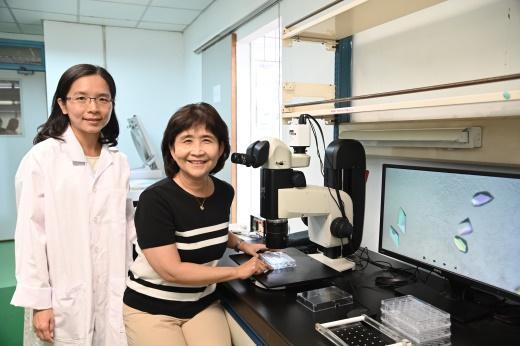

Prof. Sun Yuh-ju of the Institute of Bioinformatics and Structural Biology showing team member Tsai Chiayin how to grow a crystal.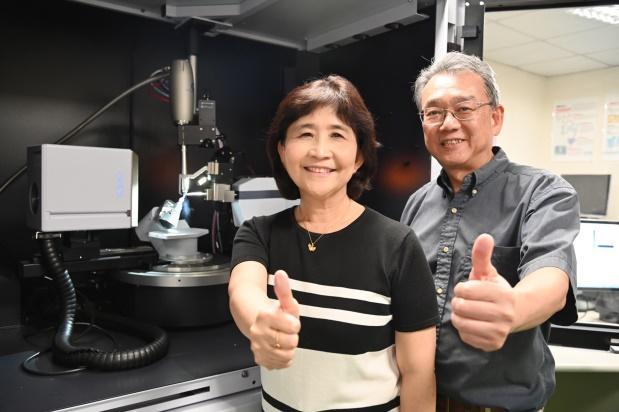

Sun (left) with research partner David Hsiao of Academia Sinica’s Institute of Molecular Biology.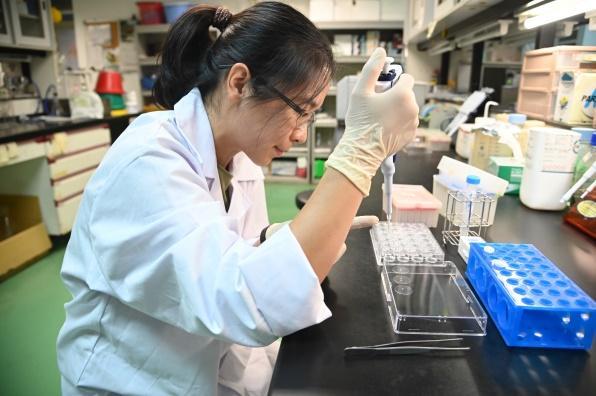

Team member Tsai Chiayin was in charge of growing the membrane protein crystals.
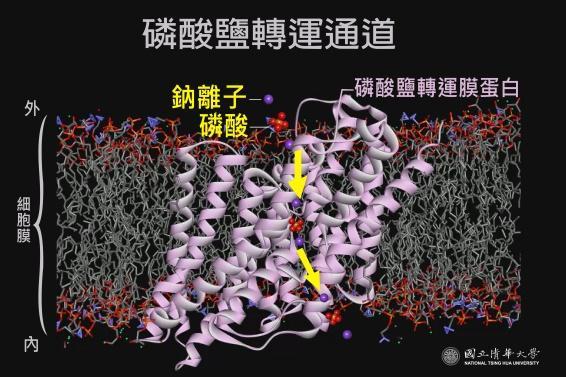

Phosphate transport membrane protein is an important channel for transporting phosphate and sodium ions into brain cells.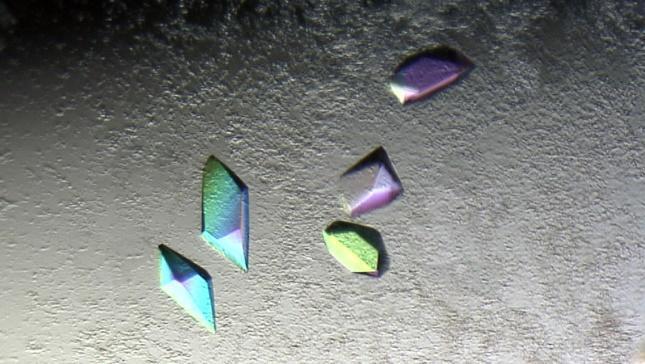

It took the team years to finally grow an optimized and stable crystal.







































